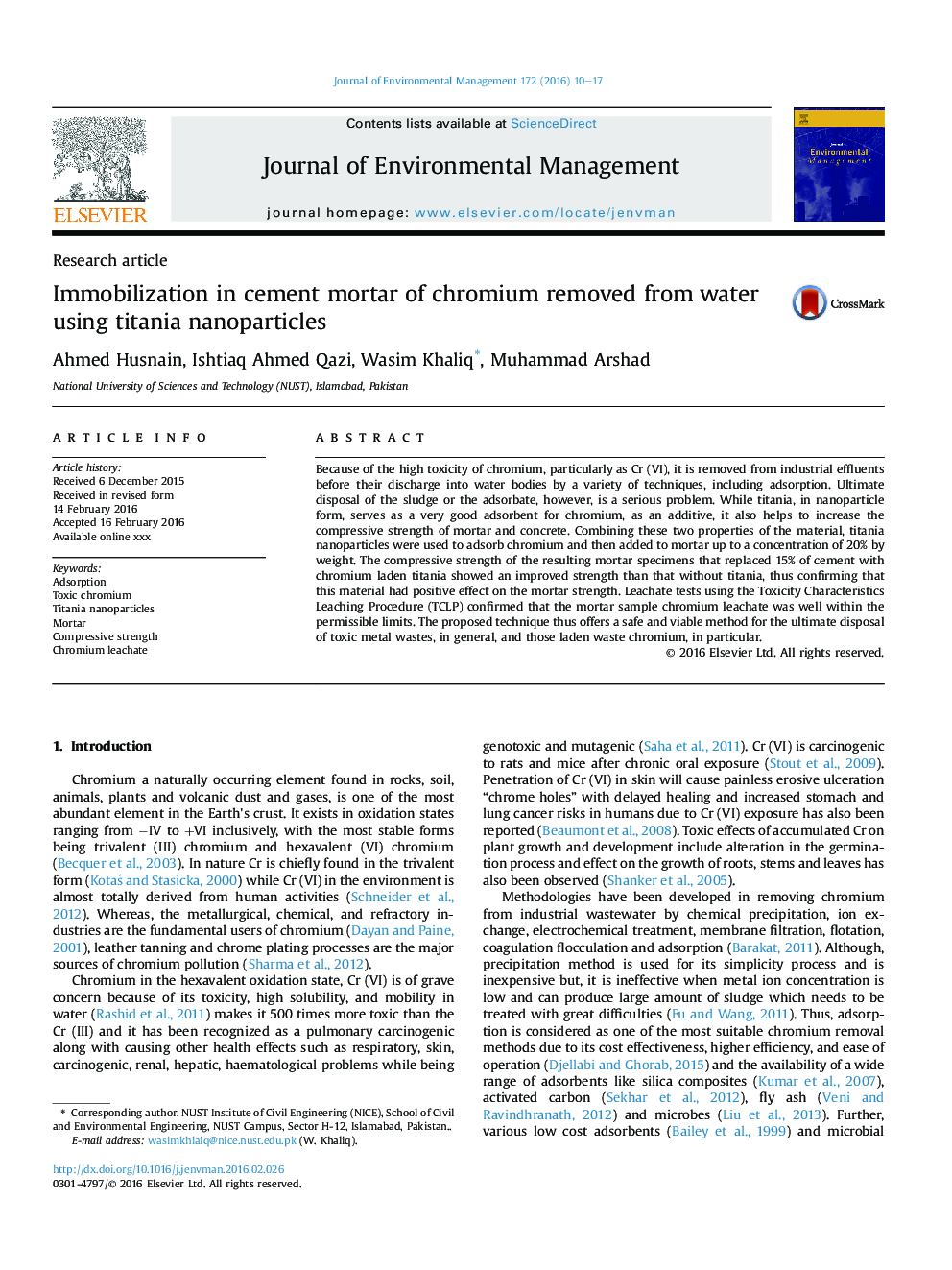| Article ID | Journal | Published Year | Pages | File Type |
|---|---|---|---|---|
| 7480537 | Journal of Environmental Management | 2016 | 8 Pages |
Abstract
Because of the high toxicity of chromium, particularly as Cr (VI), it is removed from industrial effluents before their discharge into water bodies by a variety of techniques, including adsorption. Ultimate disposal of the sludge or the adsorbate, however, is a serious problem. While titania, in nanoparticle form, serves as a very good adsorbent for chromium, as an additive, it also helps to increase the compressive strength of mortar and concrete. Combining these two properties of the material, titania nanoparticles were used to adsorb chromium and then added to mortar up to a concentration of 20% by weight. The compressive strength of the resulting mortar specimens that replaced 15% of cement with chromium laden titania showed an improved strength than that without titania, thus confirming that this material had positive effect on the mortar strength. Leachate tests using the Toxicity Characteristics Leaching Procedure (TCLP) confirmed that the mortar sample chromium leachate was well within the permissible limits. The proposed technique thus offers a safe and viable method for the ultimate disposal of toxic metal wastes, in general, and those laden waste chromium, in particular.
Related Topics
Physical Sciences and Engineering
Energy
Renewable Energy, Sustainability and the Environment
Authors
Ahmed Husnain, Ishtiaq Ahmed Qazi, Wasim Khaliq, Muhammad Arshad,
